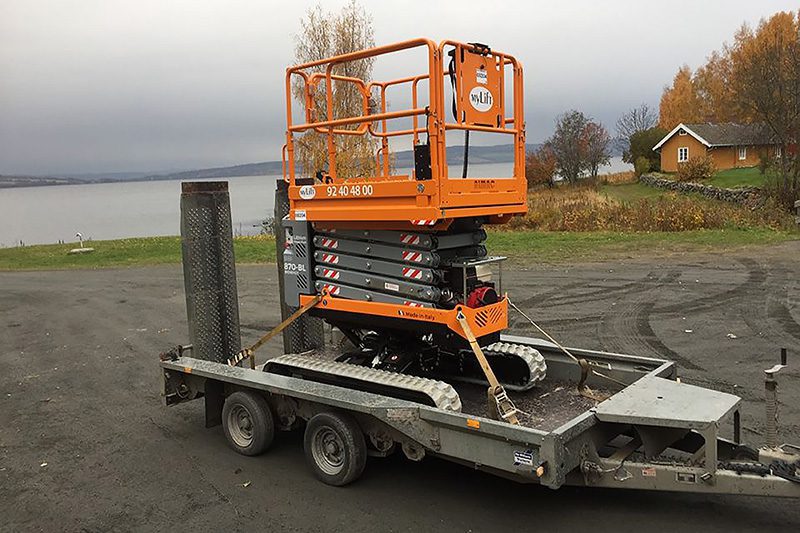What Is The Safest Way To Load A Scissor Lift Onto A Trailer?

Before loading your scissor lift onto a trailer, you need to first be aware of a few basic aspects.
Whatever experience you have, accidents happen and are almost always sudden. So it will never hurt to follow some sound advice
In this article – as you may have already guessed – we’re going to take you through the safest way to load a scissor lift onto a trailer.
The idea is not to tell you that you are doing it wrong, but to help you be as prepared as possible to load a scissor lift onto a trailer without risking injury to your employees or other road users. Safety is key
1 – Prevent any risk that could happened
When loading a scissor lift, you are responsible for making sure that everything is in working order. A risk assessment is a pre-emptive technique that allows you to sharpen up your fleet management processes and keep injury or risk of property damage to an absolute minimum.
2 – The importance of PPE
It is beneficial to wear PPE when loading a scissor lift. The basics are steel toe cap boots and a high viz jacket/ vest.
3 – Inspect your Trailer
What about the trailer? The third thing you should do is to carry out basic maintenance checks on your trailer. Make sure the trailer is within the service date, and the hauling capacity is suitable to load and support your scissor lift. The slightest mechanical defect could lead to a dangerous situation.
Loading your Scissor Lift onto a Trailer
Loading is simple so long as you tick every box before proceeding. Here’s what you need to do:
1 – Who is taking responsibility?
Its unlikely you will be loading your scissor lift alone. Furthermore, you should communicate with your colleague(s) so that you know who is responsible for what during the process.
2 – Clean your ramps
Cleaning your ramps of any mud or oil will prevent accidents due to the scissor lift slipping off or the equipment being held back by any uncleaned material
And of course, whilst on the subject of ramps, what condition are yours in? Which material do you use? Settling on the perfect loading ramps is essential for being able to load heavy machinery frequently and without issue.
3 – Clear your environment
Make sure if you always have room to manoeuvre as you wish. Especially for an operation like this which requires preparation and concentration. To avoid wasting time and once again injuring yourself, make sure that nothing is lying around.
4 – Line em’ up
Next up you’ll want to pilot the scissor lift and get everything lined up perfectly symmetrical with the loading ramps. As you are surely aware, approaching at an angle can be dangerous and cause the trailer to tip. Keep moving gradually using your spotter (or vice versa) to help you position the scissor lift perfectly for the loading procedure.
5 – Load your scissor lift onto the trailer
Once you are suitably lined up, you can slowly begin driving up the ramp. Remember that when on the ramp, the machine’s centre of gravity is going to shift; this is the most dangerous part of the process, so keep it moving steady and gradual until you make it over the crest.
Remember that when positioning your scissor lift on the trailer, to balance the weight towards the front of the trailer.
6 – Tie down your heavy equipment
Before moving the trailer anywhere, first you need to ensure that your scissor lift is thoroughly secured with ratchet straps that are in good condition.






